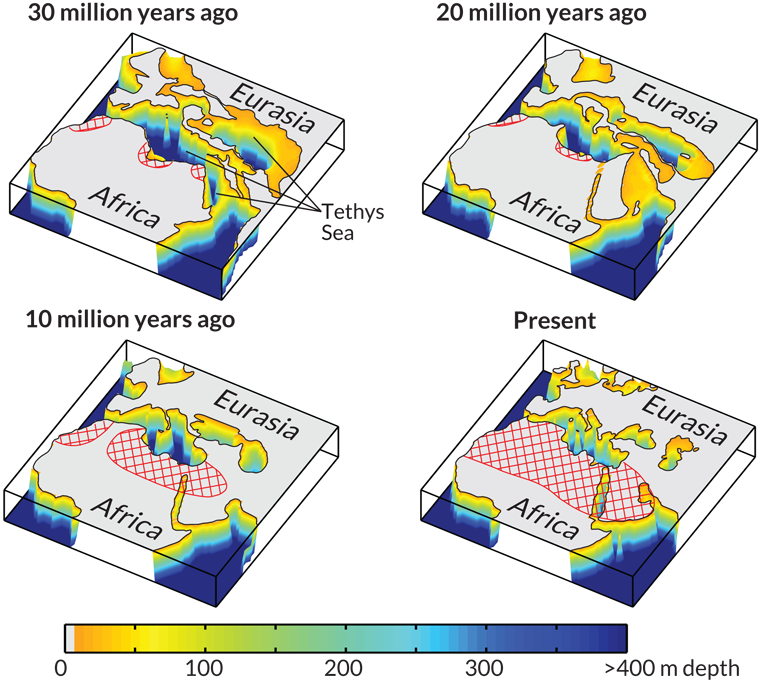
DRIED OUT The Sahara Desert formed 7 million years ago as the ancient Tethys Sea dried out, a new climate simulation suggests.
Scott Presly/FLICKR (CC BY 2.0)
- More than 2 years ago
The Sahara Desert may be millions of years older than scientists thought, researchers report in the Sept. 18 Nature. The team’s climate reconstruction suggests that the desert formed 7 million years ago as the ancient forerunner of the Mediterranean Sea shriveled.
“We didn’t expect such a big impact from the sea’s retreat, so this was a surprise,” says lead author and geologist Zhongshi Zhang of the Bjerknes Centre for Climate Research in Bergen, Norway. “This overturns the popular view on what formed the Sahara.”
Most scientists think that arid conditions took hold no more than 2 million to 3 million years ago. At that time, the onset of ice ages in the Northern Hemisphere changed wind patterns and parched North Africa. Although not all experts are convinced, Zhang and colleagues now demonstrate that millions of years earlier, the contracting sea could have drastically reduced rainfall in North Africa during summer monsoons.
This older age pegs the desert’s formation close to the time and place where the chimpanzee and human lineages probably split, says coauthor Gilles Ramstein, an earth scientist at the Laboratoire des Sciences du Climat et de l’Environnement in Gif-sur-Yvette, France.
About 200 million years ago, as the supercontinent Pangaea broke apart, a giant sea called the Tethys formed in the gap between the African and Eurasian continents. As the two continents started drifting toward each other again around 100 million years later, the Tethys contracted. Roughly 5.5 million years ago, it split into the modern Mediterranean, Caspian and Black seas.

As the Tethys gradually shrank and exposed more land, this moisture transport slowed to a crawl and less rain fell on the Sahara, the researchers propose. Over time, they say, the rainless region transformed into a desert.
This finding supports tentative evidence for an older Sahara announced in 2006 by scientists who uncovered petrified sand dunes in Chad. The age of nearby fossils suggested that the dunes dated to about 7 million years ago. The results were hotly challenged and lacked an explanation, Zhang says. “At long last we have a mechanism that explains the desert’s older age.”
However, a critic of the 2006 paper remains unconvinced by the new simulations. “This is just numerical speculation based on very little geological evidence,” says geologist Stefan Kröpelin of the University of Cologne in Germany. “One dune doesn’t make a desert, especially not the largest hot desert on Earth.”
Regardless of when the desert formed, the dwindling Tethys probably destabilized North African climate. Ramstein says that this instability contributes to why small, gradual changes in the amount of incoming sunlight reaching Earth — triggered by periodic shifts in the planet’s tilt and orbit — have caused the Sahara to fluctuate between wet and dry periods every few thousand years (SN: 8/5/06, p. 93).
These cyclical changes in North African climate and the formation of the Sahara Desert could have influenced early human evolution and later migrations across the region, Ramstein says.
But David McGee, an MIT paleoclimatologist, says that it’s hard to pin down what effect any wide-scale climate changes would have had. Early hominids probably lived in microclimates such as lakeshores and grasslands mixed with forests that were quite different from the region’s predominant climate. “These really small scale environments are really pushing the limits of a climate model like this,” he says. The work “gives us a theoretical underpinning for what could have changed 7 million years ago in the African climate but not at the level that would be directly relevant to our early ancestors.”






